10 Must-Try Budget Desserts In Turkey

After traveling the world as a nomad for a few years now, I’ve learned that it isn’t always pretty, especially when it comes to tasting a country’s most popular dishes. When you’re on a tight budget, you are typically limited to freeganism, bulk foods that can easily be carried and prepared (like pasta) or cheap things from a corner shop or grocery store.
Desserts and other non-essentials are rarely included in the allowance, unless you are lucky enough to find a particularly cheap cafe or bakery. Most people travel in order to gain a new experience in a new place, and food should not be left out of this equation. Luckily, Turkey is a country that offers very cheap authentic meals and even cheaper sweets. From specialty shops to confections served from vendors on the street, this country is perfect for a frugal foodie.
Throughout my travels and time spent living in Turkey, I was continually amazed to see the variety of sweets, from creamy chocolates and airy pastries to thick honey and brightly colored fruity concoctions. The best Turkish desserts, though, are the ones loaded with the array of nuts that the country produces.
Many of these desserts are so sweet that you only need a bite to savor the flavor for hours. The Turks are very proud of their confections, and will almost always offer you a sample if you’re walking by their shop or stand. It seems a shame to miss out, even if it’s just a little bite.
Here are the top ten easiest, cheapest, and most delicious desserts to try while visiting Turkey.
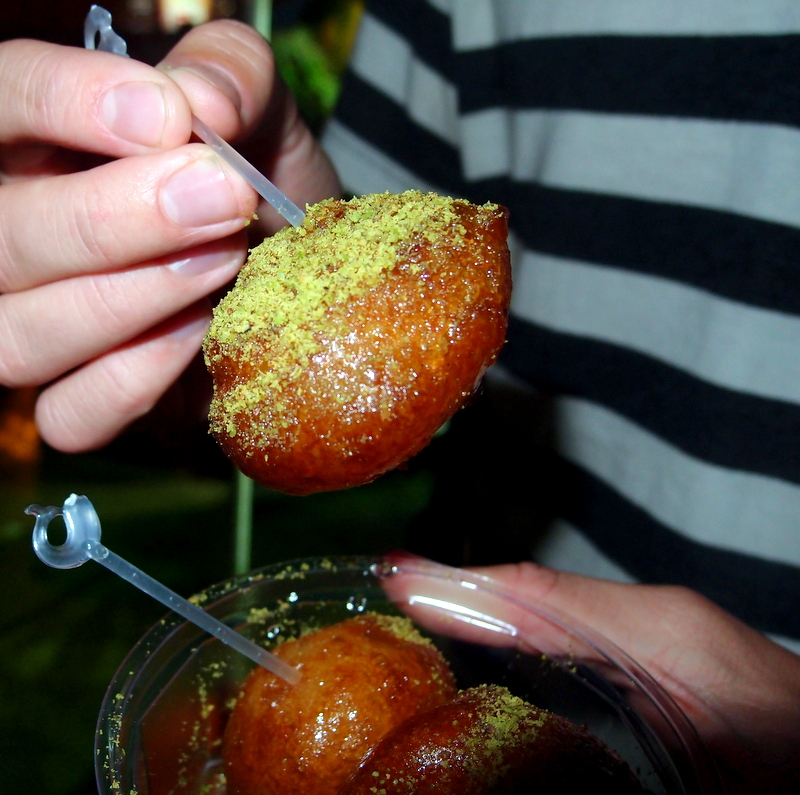
1) Lokma
Lokma is one of the versions of a Turkish donut. It’s made from a light dough that is soaked in a simple syrup and covered in pistachio shavings. The syrup makes the donut much denser, so I recommend only going for one on your first try. You also will want to use the picks provided to prevent your hands from sticking like glue for the next few hours.
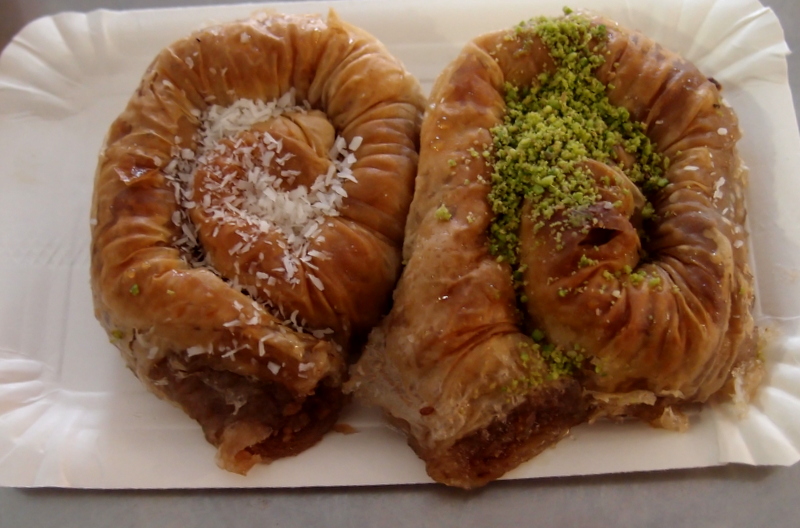
2) Baklava
Forget anything else you’ve heard about the birthplace of baklava- this dessert is 100% Ottoman in origin, and any Turk will have no problem telling you so. A rich, sweet pastry made with layers of fine filo dough, baklava is by far the most popular dessert in Turkey and the surrounding Middle Eastern countries. Chopped nuts with honey and/or syrup are held together by many layers of filo and left to set. The dessert becomes quite dense, so one small piece should leave even the most serious sweet tooth feeling beyond satisfied.
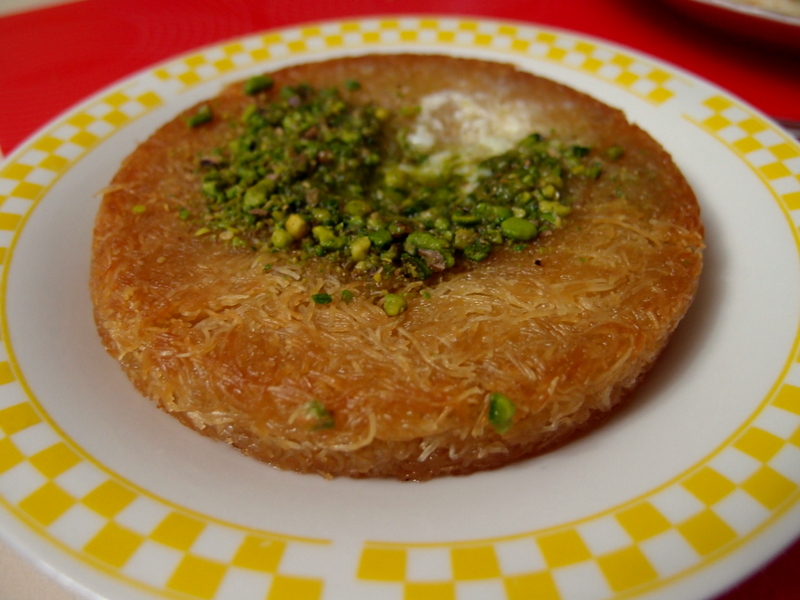
3) Künefe
The Turkish spin on cheesecake, künefe is one of my favorite desserts, not just in Turkey, but in the world. A shredded wheat-like mixture made from either semolina or thin noodle shreds is formed into a pasty with, you guessed it, syrup. The pastry is also sometimes flavored with rose or citrus fruit water. It encapsulates a thick slice of mild white cheese, and is typically topped with chopped pistachios.
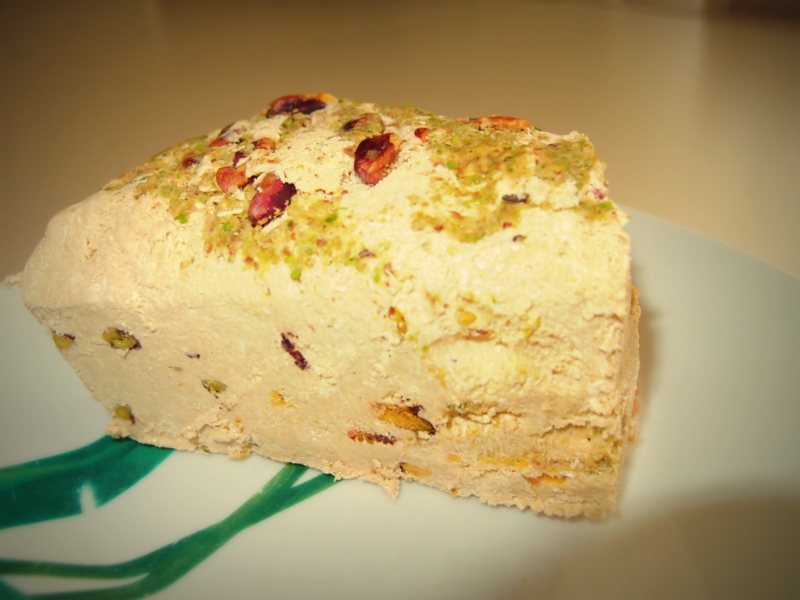
4) Halva
This dense confection is popular across the Middle East and the Balkans as both a breakfast spread item and a treat. It can be made from either semolina grains or tahini (sesame paste) and various types of nut butter, though the tahini flavor adds a savory aftertaste and is much more delicious.
Like most other sweets from the region, the best halva is covered and stuffed with pistachios. The sweet comes in a bulky block which can be sliced thinly or in large chunks. Halva can be found in all dessert bakeries, as well as in packages in corner shops. It doesn’t always taste overly sweet going down, but beware: it is addictive, and more than a few small pieces will leave you feeling a bit ill. There is no bravery in eating too much halva.
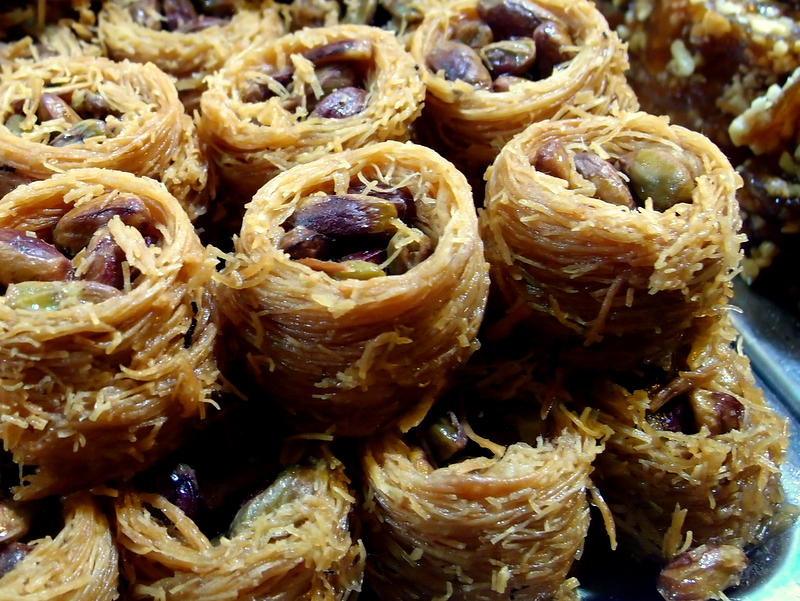
5) Honey and Nut Bowls
I’m not quite sure of the official name for this dish, as it was always communicated to me as “honey and nut pastry”– confusing, as most Turkish desserts contain honey, nuts and pastry.
In this treat, the same shredded noodles that are used in künefe are formed into a bowl-like structure and held in place by honey. The bowls are then filled with nuts. This is a go-to sweet for those who want to keep it fairly simple. Although still sweet from the syrup, the base taste of the nuts balances the dish perfectly. You can sometimes test drive a single bowl, but usually you will be required to buy several.
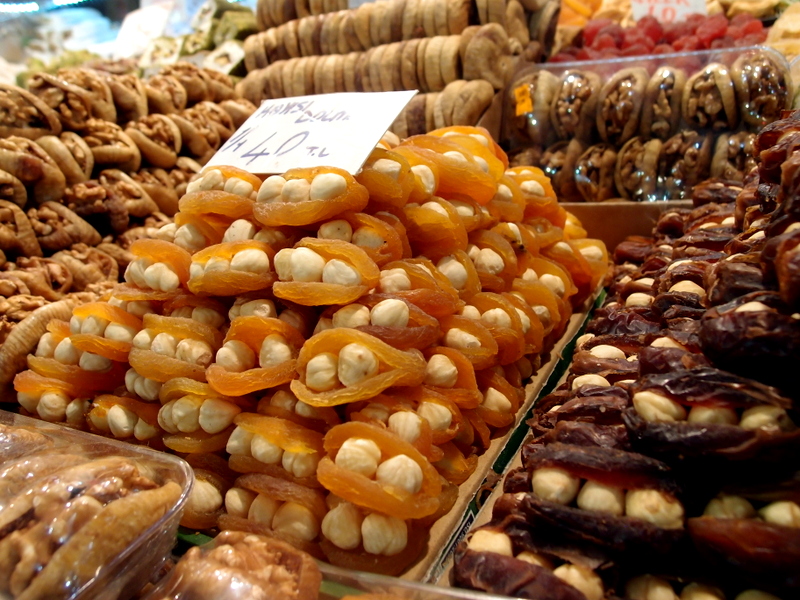
6) Dried Fruit Stuffed With Nuts
Are you sick of the overly sweet, bite-size only Turkish desserts I’ve listed thus far? You’re in luck! Apart from syrups and nuts, the Turks specialize in dried fruit. One of my favorite snacks while meandering the streets of Turkey was dried fruit stuffed with nuts. Finally, a dessert without syrup and that doesn’t leave you feeling guilty. Dried figs, apricots, and dates stuffed with hazelnuts were a few of my favorites.
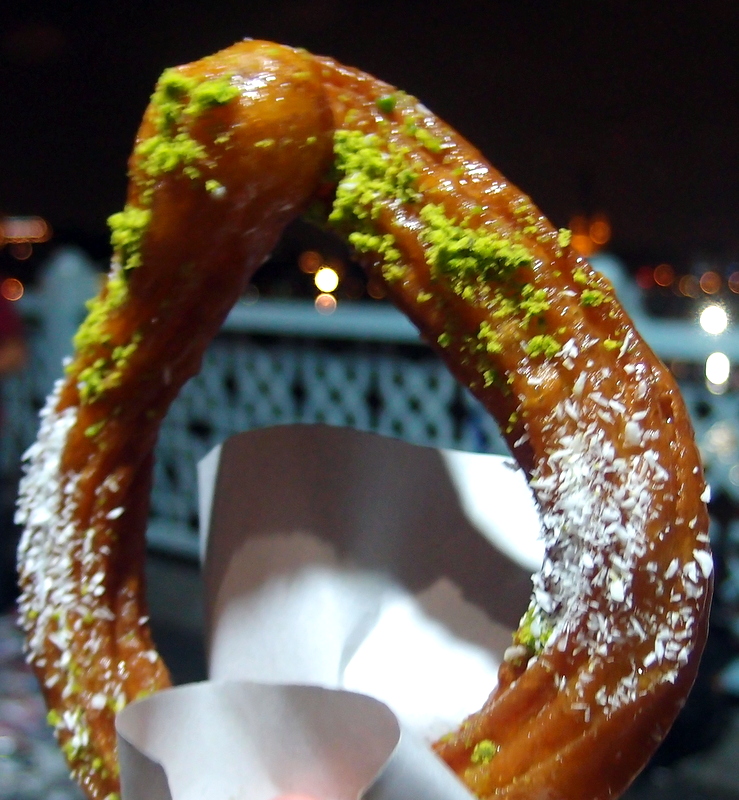
7) Halka Tatlisi
Yet another syrup-soaked pastry with crushed pistachios, but this time there’s a slight twist: a deep-fryer. Halka tatlisi is the Turkish equivalent of a churro with a glaze. These treats come in bent circles or small rectangles, but the former is the one that you’ll usually find at a street vendor. For 1 Turkish Lira ($0.50), you and your friend can get a filling treat on the street.
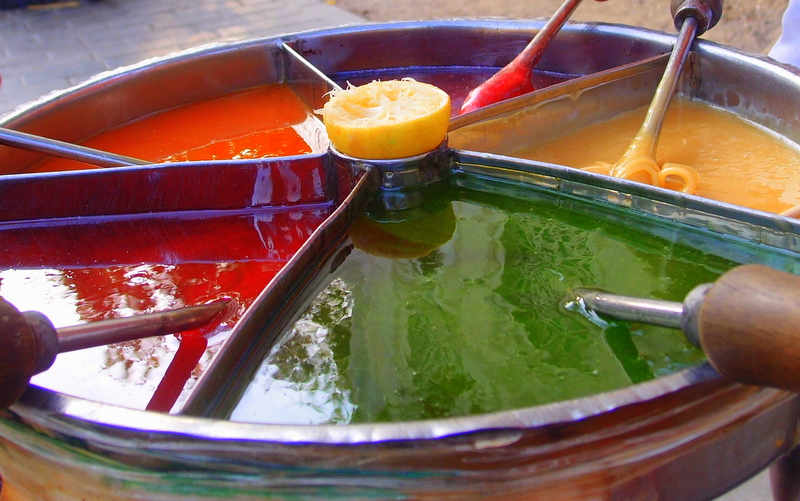
8) Hand-Turned Lollipops
I’ve seen a lot of things in my travels, but Istanbul was the first place where I found a hand-turned lollipop. The stretch of roads and bazaars between Suleymaniye Mosque and Hagia Sophia is filled with lollipop vendors, and for next to nothing, you can custom pick your flavors (I went with lime and strawberry). Sticky molten sugar is churned in a large vat until the vendor pulls a small dollop out using a wooden stick. The stick is then twisted in circles while other colors/flavors are added to create a multi-color candy. So much better than a lolli from a wrapper!
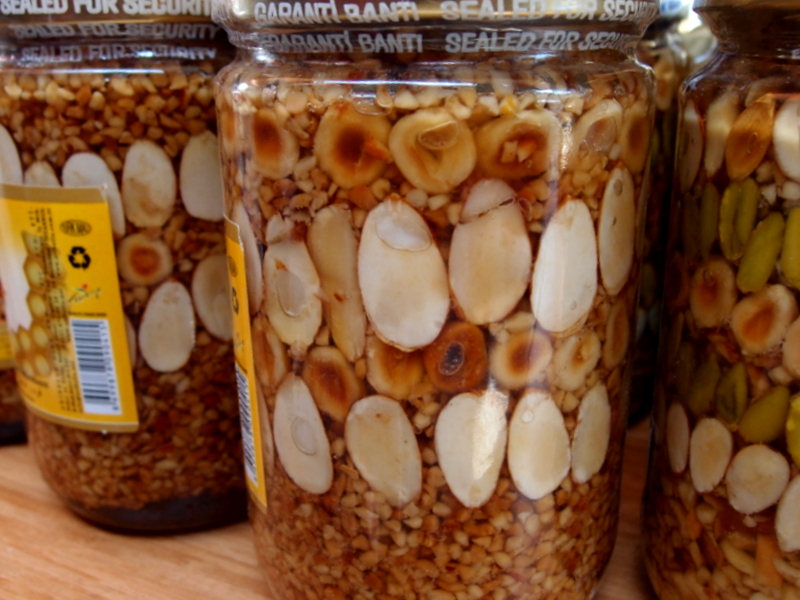
9) Ballı Çerez
As you’ve obviously noticed, the Turks love to include honey in their sweets, and ballı çerez is no different. This is a condiment made from honey, peanuts, hazelnuts, pistachios, walnuts, raisins, apricots and other spices. It’s delicious when spread on bread or plain cookies, but is also served as an appetizer.
Ballı çerez is quite sweet but has a very rich nutty after taste that doesn’t leave you with a stomachache . . . if you proceed with caution. You can purchase it in bulk jars or as just a small single-meal serving. In Turkey, it’s known to be an aphrodisiac and is marketed as such in all tourist markets.
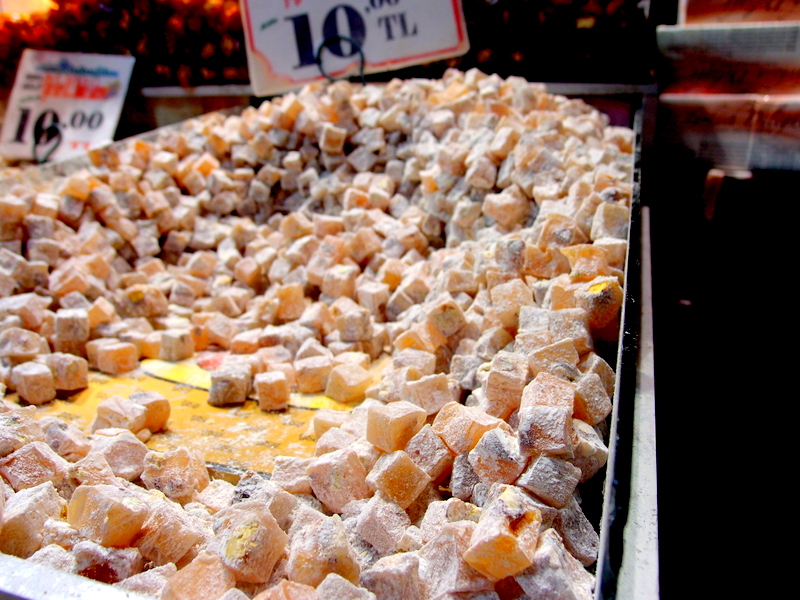
10) Lokum(Known In the West as Turkish Delight)
This is by far the most well-known sweet from Turkey, and it can be found in almost every shop. It is a very simple confection, made from a flavored jelly; nuts such as pistachios and hazelnuts are also frequently added.
The Turks typically make Lokum with rosewater, cinnamon, lemon or other fruit essences. It can either be cut into small cubes and rolled in powdered sugar or coconut or left in long chunky strips. My personal favorite is pomegranate stuffed with pistachios, another specialty of the country. When in Turkey, if you only choose to try one sweet, it absolutely must be Turkish Delight.

/
 A 24-year-old American hailing from Detroit, Michigan, Leah’s passion for travel and trying new cuisines developed after visiting Poland for a two-week holiday and quitting her job to hitchhike around Europe. The next few years were filled with adventure, cycling and rafting around Europe, living in Turkey, and finally moving to Asia. She now shares those adventures and culinary experiences on her website, Thevegetariantraveller.com. Leah has just shared her first book, The Beer Can Cookbook, on Amazon, and is currently teaching English on Jeju Island in South Korea.
A 24-year-old American hailing from Detroit, Michigan, Leah’s passion for travel and trying new cuisines developed after visiting Poland for a two-week holiday and quitting her job to hitchhike around Europe. The next few years were filled with adventure, cycling and rafting around Europe, living in Turkey, and finally moving to Asia. She now shares those adventures and culinary experiences on her website, Thevegetariantraveller.com. Leah has just shared her first book, The Beer Can Cookbook, on Amazon, and is currently teaching English on Jeju Island in South Korea.
